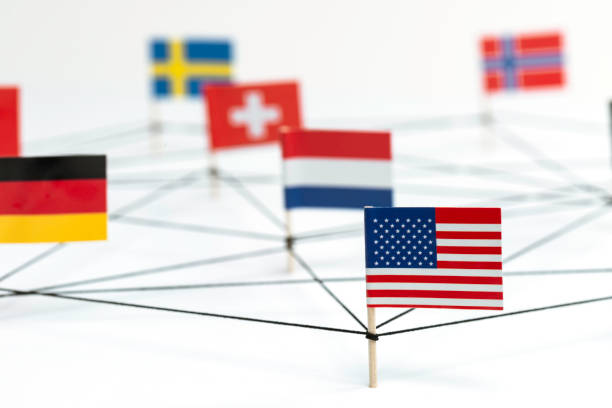In the fast-paced world of technology and innovation, the exchange of knowledge across borders has become a cornerstone of global progress. Technology transfer, the process by which intellectual property (IP) and technological know-how move from one entity or country to another, plays a pivotal role in driving economic development, fostering innovation, and addressing global challenges. At the heart of this intricate web of global knowledge exchange are International Intellectual Property Offices (IPOs), which serve as crucial facilitators and regulators. This blog explores the multifaceted role of international IP offices in technology transfer, delving into their functions, challenges, and the impact they have on the global innovation landscape.

Understanding Technology Transfer
Technology transfer is a complex process involving the movement of intellectual property rights, technical knowledge, and expertise from one party (transferor) to another (transferee). This exchange can take various forms, including licensing agreements, joint ventures, research collaborations, and the sale of intellectual property. The primary goal of technology transfer is to leverage existing innovations for broader applications, spurring economic growth and addressing societal challenges.
The Components of Technology Transfer
1. Intellectual Property Rights (IPR)
At the core of technology transfer are intellectual property rights, which include patents, copyrights, trademarks, and trade secrets. These legal frameworks protect the rights of inventors, creators, and innovators, ensuring that their work is safeguarded and can be commercially exploited.
2. Licensing Agreements
Licensing is a common mechanism for technology transfer, where the owner of the intellectual property grants permission to another party to use, produce, or sell the patented technology. Licensing agreements define the terms and conditions of use, including royalty payments, duration, and geographical scope.
3. Joint Ventures and Collaborations
Companies and research institutions often engage in joint ventures and collaborations to pool resources and expertise. These partnerships enable the sharing of knowledge, facilities, and risks, accelerating the development and commercialization of innovative technologies.
4. Research and Development (R&D) Collaboration
Collaborative research efforts involve multiple entities working together to advance scientific knowledge and develop new technologies. These collaborations can result in the joint ownership of intellectual property and the mutual benefit of shared discoveries.
The Role of International IP Offices
International Intellectual Property Offices play a central role in shaping the landscape of technology transfer by providing the legal and regulatory frameworks that govern intellectual property rights. Here are key aspects of their role:
1. Global Standardization of Intellectual Property Protection
International IP offices contribute to the establishment and maintenance of global standards for the protection of intellectual property rights. Treaties and agreements, such as the Agreement on Trade-Related Aspects of Intellectual Property Rights (TRIPS), administered by the World Trade Organization (WTO), provide a framework for harmonizing IP laws and regulations across countries.
2. Patent Cooperation and Harmonization
Patent systems vary from country to country, creating challenges for inventors seeking protection for their innovations internationally. International IP offices, such as the World Intellectual Property Organization (WIPO), facilitate patent cooperation and harmonization efforts. The Patent Cooperation Treaty (PCT) allows inventors to seek patent protection simultaneously in multiple countries by filing a single international application.
3. Dispute Resolution
As technology transfer involves complex legal agreements and the potential for disputes, international IP offices play a crucial role in dispute resolution. WIPO provides a platform for the resolution of intellectual property disputes through its Arbitration and Mediation Center, offering a neutral and efficient means of settling conflicts.
4. Capacity Building and Technical Assistance
Many developing countries may face challenges in establishing robust intellectual property systems. International IP offices engage in capacity-building initiatives and provide technical assistance to support the development of effective IP frameworks. These efforts aim to empower nations to participate more actively in global technology transfer activities.
5. Information and Database Services
Access to information is vital for technology transfer. International IP offices maintain extensive databases of patents, trademarks, and other intellectual property information. These databases serve as valuable resources for inventors, researchers, and businesses seeking to understand the global intellectual property landscape.
6. Promotion of Innovation and Technology Transfer
International IP offices actively promote innovation and technology transfer by organizing conferences, workshops, and events that bring together stakeholders from academia, industry, and government. These initiatives foster dialogue, collaboration, and the sharing of best practices in the field of intellectual property.
Challenges in International Technology Transfer
While international IP offices play a pivotal role in facilitating technology transfer, several challenges persist in the global landscape:
1. Divergent IP Laws and Regulations
The lack of uniformity in intellectual property laws and regulations across countries poses a significant challenge for technology transfer. Varying legal frameworks can lead to complexity in navigating the global intellectual property landscape and may hinder the seamless transfer of technology.
2. Enforcement Issues
Intellectual property infringement and enforcement pose challenges, especially in jurisdictions with weak legal systems. International IP offices work towards creating mechanisms for effective enforcement, but disparities in legal infrastructure remain a hurdle.
3. Resource Disparities
Developing countries may lack the resources and infrastructure necessary to fully engage in technology transfer activities. International IP offices focus on capacity-building efforts, but addressing resource disparities requires sustained collaboration and support from the global community.
4. Emerging Technologies
Rapid advancements in emerging technologies, such as artificial intelligence and biotechnology, present unique challenges for intellectual property protection. International IP offices must continually adapt to address the evolving nature of innovation and ensure that regulatory frameworks remain relevant and effective.
5. Global Health and Access to Medicines
The intersection of intellectual property and global health raises questions about access to essential medicines. Balancing the need for innovation with ensuring affordable access to critical medications remains a complex issue that international IP offices navigate through discussions and policy considerations.

Impact on Economic Development
The effective functioning of international IP offices significantly influences economic development by fostering innovation and facilitating technology transfer. Here’s how:
1. Stimulating Innovation
Robust intellectual property protection encourages innovation by providing inventors and creators with the confidence that their efforts will be rewarded. This, in turn, leads to increased investment in research and development, driving technological advancements.
2. Attracting Foreign Direct Investment (FDI)
Countries with strong intellectual property protection regimes are often more attractive to foreign investors. International IP offices contribute to creating a favorable environment for foreign direct investment, as investors seek assurance that their intellectual property will be safeguarded.
3. Job Creation and Industry Growth
Technology transfer contributes to the growth of industries and the creation of new job opportunities. As innovative technologies move across borders, local industries can adopt and adapt them, leading to increased productivity and economic growth.
4. Global Competitiveness
Nations that actively participate in technology transfer activities enhance their global competitiveness. Access to cutting-edge technologies through international collaboration allows countries to stay competitive in the global marketplace.
5. Sustainable Development
Technology transfer plays a crucial role in achieving sustainable development goals. By sharing knowledge and innovations, countries can address pressing global challenges such as climate change, healthcare, and food security.
Future Trends and Opportunities
The future of international technology transfer and the role of IP offices are influenced by emerging trends and opportunities:
1. Digital Transformation
The ongoing digital transformation is reshaping industries and creating new opportunities for technology transfer. International IP offices must adapt to the challenges posed by digital technologies, including issues related to data ownership, artificial intelligence, and blockchain.
2. Open Innovation
The concept of open innovation, where organizations collaborate with external partners to share ideas and resources, is gaining prominence. International IP offices can play a role in facilitating open innovation by creating frameworks that support collaborative research and development.
3. Global Collaboration on Grand Challenges
Addressing global challenges, such as climate change and public health crises, requires collaborative efforts. International IP offices can play a key role in fostering global collaboration on grand challenges by facilitating the transfer of technologies that address these pressing issues.
4. Rethinking Intellectual Property Models
The traditional models of intellectual property protection are being reexamined. There is ongoing discussion about alternative models, such as open-source licensing and collaborative commons, which challenge traditional notions of exclusivity in intellectual property.
5. Enhanced Support for Developing Countries
As the global community recognizes the importance of inclusive innovation, there is a growing emphasis on providing enhanced support for developing countries. International IP offices can contribute by expanding capacity-building initiatives and providing technical assistance tailored to the specific needs of these nations.
Conclusion
The role of International Intellectual Property Offices in technology transfer is multifaceted and indispensable. By providing the legal and regulatory frameworks that govern intellectual property rights, these offices facilitate the seamless exchange of knowledge and innovation across borders. As technology continues to advance, international IP offices must evolve to address emerging challenges and opportunities, ensuring that the global innovation landscape remains vibrant, inclusive, and conducive to sustainable development. Through collaboration, standardization, and a commitment to balancing the interests of innovators and the public, international IP offices can continue to shape the future of technology transfer on a global scale.

Leave a Reply